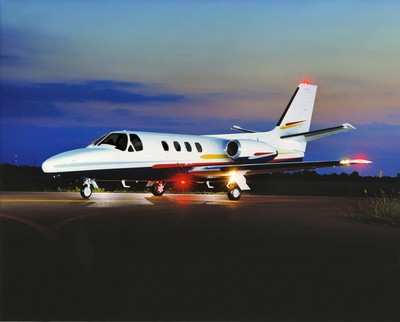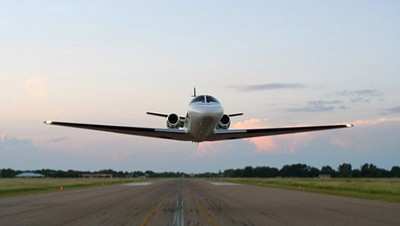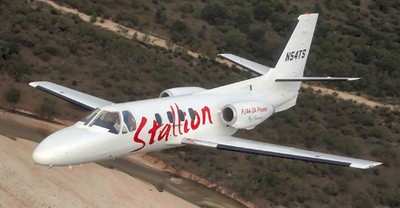XR-Option Available For Re-engined Legacy Jets
When it comes to making a good thing even better, few are as
ambitious as Sierra Industries, with its line of re-engining
programs and other modifications for legacy Citation business jets.
This week, the company told ANN things have been "kicked up a
notch," with the announcement of the XR extended-range upgrades for
the company's Williams FJ-44 re-engined Citations.

With the addition of the exclusive aft fuel tank modification,
Citation I, II and S-II models gain an additional 120 gallons of
fuel capacity. The extra fuel allows up to 60 minutes of additional
cruise time and extends range by as much as 400 nautical miles.
The FAA-approved modification installs a double-walled aluminum
fuel cell in front of the aft cabin bulkhead, minimizing changes to
the aircraft’s center of gravity. The 120-gallon fuel cell is
only 18 inches in depth, making the modified Citation I cabin
virtually identical in size to a CJ1 and allowing ample room to
retain a useable aft toilet. System installation includes adding a
new pressure bulkhead, fuel lines and venting equipment, and aft
cabin re-upholstering to match the original interior decor.
Sierra says its FJ44-powered aircraft are an ideal platform for
the XR tank upgrade. The additional power and efficiency of the
Williams engines make it possible to enjoy increased fuel capacity
and extended range while still retaining substantial useful
payload. According to the company, the Super II XR boasts a useable
maximum fuel payload of nearly 500 lbs. -- more than the original
Citation II without the additional fuel capacity.

The XR upgrade is available for Williams FJ44-powered Stallion
and Super II modifications, adding $199,000 to the total cost. The
full Stallion XR modification can be performed on any Citation 500
or 501SP aircraft, and includes two new Williams International
FJ44-2A engines, 120 gallon aft cabin fuel cell, and all necessary
hydraulic, mechanical and electrical changes. The modification can
be done in as little as 10 weeks and is priced at $1,805,500.
In related news, Sierra says Super S-II XR testing is proceeding
and FAA approval is expected shortly for S550 series aircraft. When
combined with FJ44 re-engining, the XR upgrade adds approximately 2
weeks of installation time. The Super II XR modification is
available for owners and operators of Cessna Citation 550 and 551SP
aircraft, with a down time of 10-12 weeks for installation.
2008 MSRP for the complete Super II XR modification is $2.103
million (with trade-in credit for existing engines) and includes
Williams FJ44-3A engines and installation, all associated
structural changes to accommodate the increased thrust, all
necessary hydraulic, mechanical and electrical changes and
dual-channel FADEC for power management and full-time synchronizing
between engines.

Other available Sierra options include upgraded avionics
packages, new paint and interior treatments, extended-width cargo
doors and more. For those without an existing Citation II for
modification, complete turnkey Super II XR aircraft are also
available for sale from Sierra.
 Aero-News: Quote of the Day (04.28.25)
Aero-News: Quote of the Day (04.28.25) ANN's Daily Aero-Term (04.28.25): Decision Altitude (DA)
ANN's Daily Aero-Term (04.28.25): Decision Altitude (DA) ANN's Daily Aero-Linx (04.28.25)
ANN's Daily Aero-Linx (04.28.25) Airborne-Flight Training 04.24.25: GA Refocused, Seminole/Epic, WestJet v TFWP
Airborne-Flight Training 04.24.25: GA Refocused, Seminole/Epic, WestJet v TFWP Aero-News: Quote of the Day (04.29.25)
Aero-News: Quote of the Day (04.29.25)





